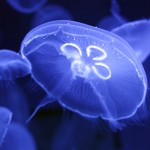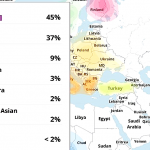Damn Those Jellies!
 You lug your stuff from the car, yell at the kids to at least carry their own towel, put out your chairs, spread your blanket, and rearrange your cooler. Then you double check sunscreen, fix ponytails, make sure everyone gets a snack and finally, sit back and to watch your kids have fun in the surf. Then, the dreaded scream, followed by “Mommeeeeeee … something stung me!” Your initial instinct is to hide behind your umbrella. Your second instinct is to say, “You’re fine.” After all, you don’t see any blood. But then, you see the real pain on her face and the telltale red mark on her skin and you realize you have to be the parent here. I hate when that happens.
You lug your stuff from the car, yell at the kids to at least carry their own towel, put out your chairs, spread your blanket, and rearrange your cooler. Then you double check sunscreen, fix ponytails, make sure everyone gets a snack and finally, sit back and to watch your kids have fun in the surf. Then, the dreaded scream, followed by “Mommeeeeeee … something stung me!” Your initial instinct is to hide behind your umbrella. Your second instinct is to say, “You’re fine.” After all, you don’t see any blood. But then, you see the real pain on her face and the telltale red mark on her skin and you realize you have to be the parent here. I hate when that happens.
Jellyfish stings can really hurt. They can also be really dangerous. Some jellyfish stings can kill, but this is extremely rare and more common in the warm waters of the Pacific and Indian Oceans where Box Jellyfish can be found.
 If you are swimming at a popular beach spot, the jellyfish you are most likely to encounter is a sea nettle.
If you are swimming at a popular beach spot, the jellyfish you are most likely to encounter is a sea nettle.
Jellyfish “sting” by releasing nematocysts from their tentacles. These can attach to your skin and then release chemicals. Some nematocysts fire immediately and some are delayed.
Did you see the Friends episode when Joey pees on Monica to treat her jellyfish sting?Bad idea. Fresh water is also a bad idea. Both urine and fresh water can cause the nematocysts to continue to release their toxins into your skin.
The goal is to neutralize the nematocysts. In most cases vinegar works well. Pour on the skin for about 30 seconds (stock up on vinegar beach goers) and then soak in vinegar for several minutes. If you don’t have vinegar, try a mixture of sea water and baking soda. First rinse over area, then mix into a paste and lather on.
Next, shave the area with a razor if available or the straight edge of a credit card or knife. The idea here is to remove all the nematocysts from the skin. “Shave” gently, as pushing too hard can cause the little buggers to release more toxin.
AFTER you’ve done the above and removed the nematocysts, then you can apply ice for pain and swelling.
In more severe cases, seek medical attention:
– the sting covers a large part of the body
– the person stung is very young or very old
– the sting involves the face or genitals
– there is difficulty breathing or the person’s voice is changing
– loss of consciousness, weakness, nausea or muscle spasms
– hives at a site other than the sting site
– chest pain or irregular heart beat




















